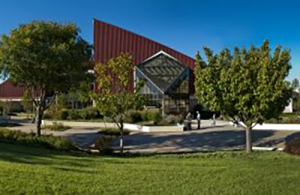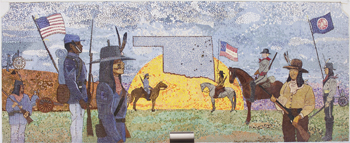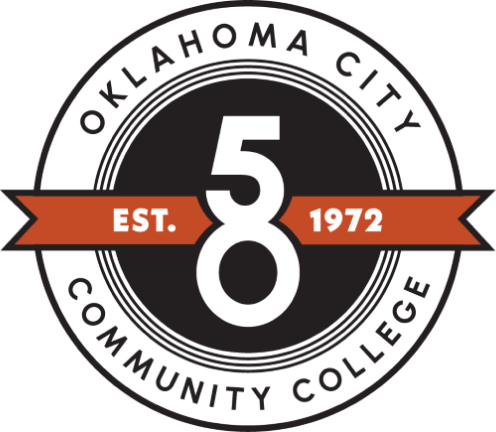Mosaics The Battle of Honey Springs
The Battle of Honey Springs
Click on panel for more detail
Information is provided by the Oklahoma Historical Society.
The Battle of Honey Springs was fought on July 17, 1863 on the Old Texas Road, near Checotah and Rentiesville. It was the largest and most decisive battle of the War between the States in Indian Territory.
Honey Springs had served for many years as a stage stop, provision point, and watering place on the Texas Road; the main pre-war transportation route connecting Indian Territory with Texas, Kansas, Missouri, and Arkansas.
Early in the Civil War it became an important depot for the Confederates. It took on increased significance as the Confederates planned to drive all federal forces from Indian Territory during the mid-summer of 1863.
The Confederates of Honey Springs were ready to march on Fort Gibson and awaited the arrival of approximately 3,000 reinforcements and additional artillery from Ft. Smith on July 17, under the command of Brigadier General William L. Cabell, a West Point graduate distinguished for bravery in combat. In command of the Confederate forces and additional artillery from Ft. Smith on July 17, under the command of Brigadier General William L. Cabell, a West Point graduate distinguished for bravery in combat. In command of the Confederate forces at Honey Springs was Brigadier General Douglas H. Cooper, a former United States Choctaw Chickasaw Indian agent and an officer veteran of the Mexican War.
On July 1 and 2 at Cabin Creek, Confederate forces attempted to intercept a large military supply train of 200 wagons enroute to Fort Gibson. After the unsuccessful attempt the Federals held Fort Gibson and prepared for an offensive attack against the Confederate forces at Honey Springs.
On July 14, several days after starting campaign preparations at Fort Gibson, even though severely ill, MaJor General Blunt decided to begin an advance on Honey Springs. On July 16, around midnight. during a rain shower, the first skirmish occurred near Chimney Mountain when the Union advance guard encountered a Confederate scouting party. At daybreak, Blunt's Calvary came upon Confederate advance units about 5 milesl10rth of Elk Creek. The two skirmished briefly and Blunt's Calvary drove the Confederates back to the main line. The Confederates opened the battle by firing on the federal artillery.
Over two hours the Confederates effectively held their position while attempting a spirited flanking movement of the federal left. The fighting in the underbrush was slow moving and confusing as the lines swayed under the impact of close-in and hand to hand combat. With many more men committed to battle that were available to the Federals, the Confederates appeared to be compensating satisfactorily for their inferior gun powder, firearms, and artillery.
A set of unusual circumstances prevailed to turn the tide of the battle. Blunt ordered Colonel James M. WllIlams, the commanding officer of the First Kansas Colored Volunteer Infantry Regiment, located near the center of the Federal line, to capture the 4-Gun Confederate artillery battery supporting the Twentieth and Twenty-Ninth Texas Calvary regiments. Soon the Federal and Confederate lines fired simultaneously.
The battle progressed, units of the Federal Second Indian Home Guard Regiment unintentionally moved in between the Kansas Volunteer Regiment and the Texas Calvary Regiments. The Indians were ordered to fall back to their position in the battle line. The Confederates baling this command assumed that the Federals were failing back. The order was given to pursue the Federals. The Confederates approached to within 25 paces of the Federals, to be met with a valley from the deadly accurate rifles of the Kansas - Colored Regiment. The Confederate color bearer fell, but the colors were immediately raised and once again shot down. They were raised again and once more leveled by a valley from the Kansas Regiment. Then Federal soldiers from the Indian Home Guards picked up the Confederate colors, much to the dismay of men and officers from the Kansas Regiment, who asked permission to break ranks and secure them. Permission was refused.
Realizing the position could no longer be held. Confederate troops removed artillery, and vigorously defended the bridge across the creek, while making a firm stand on the south bank of the stream. Several determined efforts were made to hold the bridge, but finally superior federal firepower prevailed. Confederates were In orderly retreat for about a mile and a half down the Texas Road to Honey Spring's Depot. Here a final but effective stand was made, mainly by the reserve Choctaw and Chickasaw Regiments and the two Squadrons of Texas Calvary, giving the Confederates time to evacuate virtually all, of their forces artillery and baggage train.
By 2:00 p.m. the battle was over - 4 hours after it had begun. The Confederates moved last from the battlefield and at about 4:00 p.m. joined Brigadier General Cabell's 3,000 man force enroute with 4 Mountain Howitzers from Fort Smith, about 50 miles distant. If Cabell had arrived in time for the battle, the Federals would likely have lost.
The Battle of Honey Springs was in both size and importance the Gettysburg of the Civil War in Indian Territory for it marked the climax of Massed Confederate Ml11tary resistance and opened the way for the capture of Fort Smith and much of Arkansas.
The Honey Springs' settlement completely disappeared with the construction of the Missouri, Kansas and Texas Railroad soon after the Civil War. The Texas Road was closed with the coming of U.S. Highway 69 In the 1920's, But clear flowing Honey Springs can be seen about one and one half mile’s east and north of Rentiesville in McIntosh County. Today the Honey Springs battle site of nearly 3,000 acres is still wooded and rural, much as it was at the time of the engagement between the North and South.
Significant Points
- It was the largest battle of the Civil War in Indian Territory involving 3,000 federals and 6,000 confederates.
- It was of the three most significant battles west of the Mississippi River.
- It was the significant as the first engagements of the Civil War in which Negroes produced their qualities and fighting men. The Negro unit involved was the Federal First Kansas Colored Volunteer Infantry Division.
- It was the only battle of the Civil War where Indians fought Indians.
- It was the only battle of the Civil War where Indians, Blacks and Whites fought.










